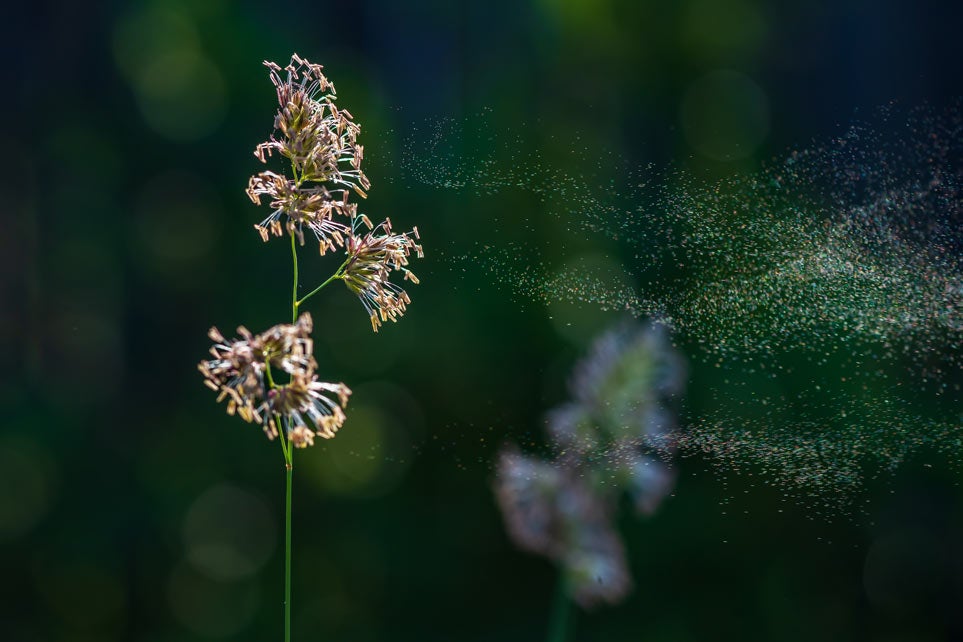What is pollen?
Pollen is the tiny egg-shaped male cells of plants, including trees, grasses, and weeds. Pollen is microscopic in size.
It is the most common cause of hay fever (seasonal allergic rhinitis).
Which plants produce pollen that cause allergic reactions?
Plants that have powdery granules of pollen that are easily blown by the wind, such as:
-
Trees. These include oak, western red cedar, elm, birch, ash, hickory, poplar, sycamore, maple, cypress, walnut, catalpa, olive, and pecan.
-
Grasses. These include Timothy, Johnson, Bermuda, orchard, sweet vernal, red top, and some blue grasses.
-
Weeds. These include ragweed, sagebrush, pigweed, tumbleweed, Russian thistle, and cockle weed.
Most flowering plants, such as roses, have heavier, waxy pollens that are not as easily wind-blown. Bees or butterflies spread these pollens.
When is pollen season?
Each plant has a pollen season. It often starts in the spring. But it may begin as early as January in the southern part of the U.S. The season often lasts until November. Different parts of the country have different pollinating plants and different pollen seasons.
Can hay fever in pollen season be prevented?
To lessen the effects of hay fever during pollen season, do the following:
-
Keep windows closed at night and use air conditioning. This cleans, cools, and dries the air.
-
Limit outdoor activities early in the morning between 5 a.m. and 10 a.m., when pollen is most common.
-
Keep car windows closed when traveling.
-
Take a vacation to an area where pollen is not as common, such as the ocean.
-
Take the medicines prescribed by your healthcare provider.
-
Don't spend much time outdoors when the pollen count is high. If you spend time outdoors, wash your hair and change your clothes when you come back inside.
-
Don't rake leaves during pollen season.
-
If you are allergic to grass, wear a mask or have someone else mow the lawn.
-
Don't hang bedding or clothing outside to dry.
-
Wear sunglasses and a hat to keep pollen out of your eyes and hair.
Talk with your healthcare provider about allergy immunotherapy. This treatment can help build your resistance to pollen.


